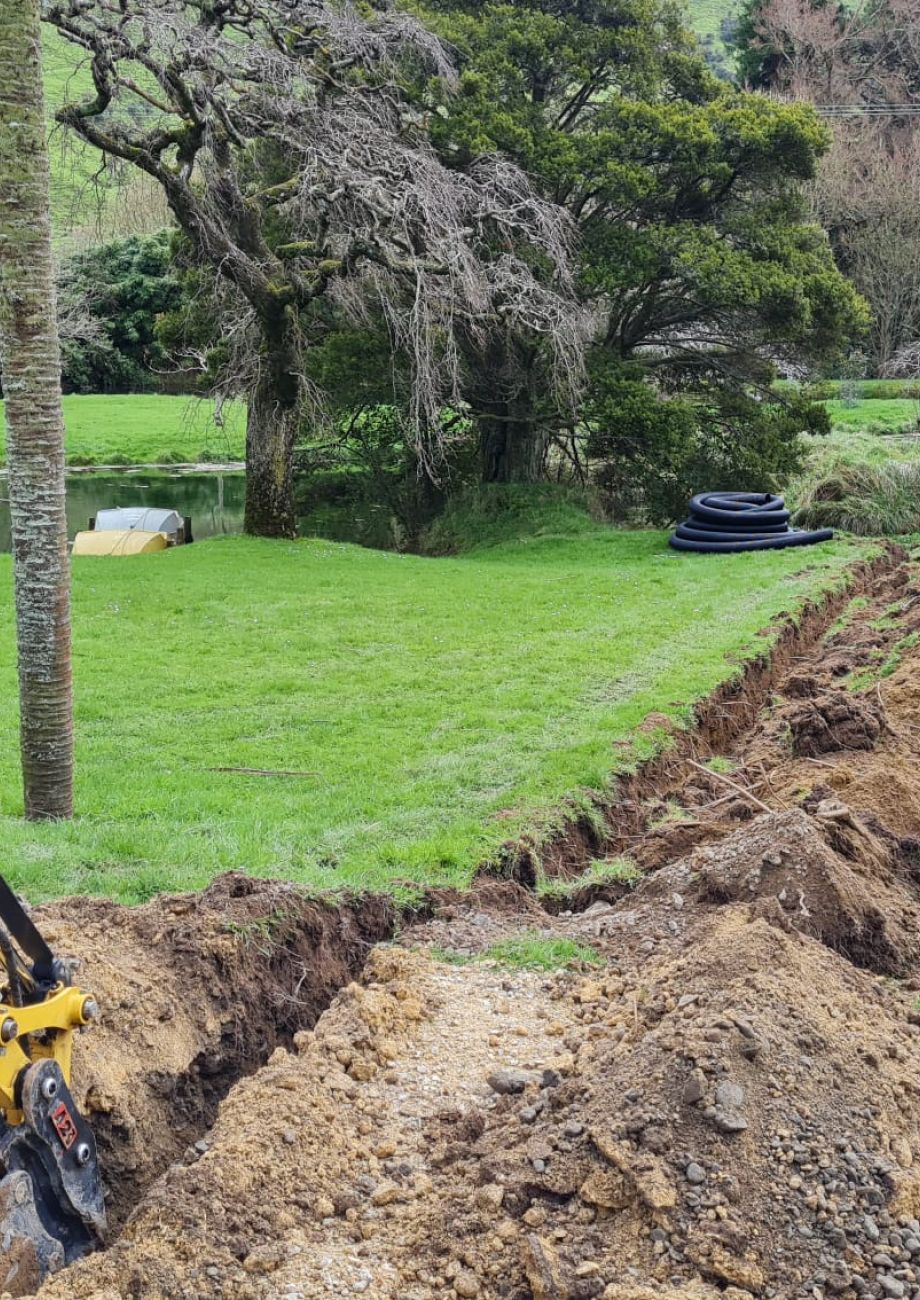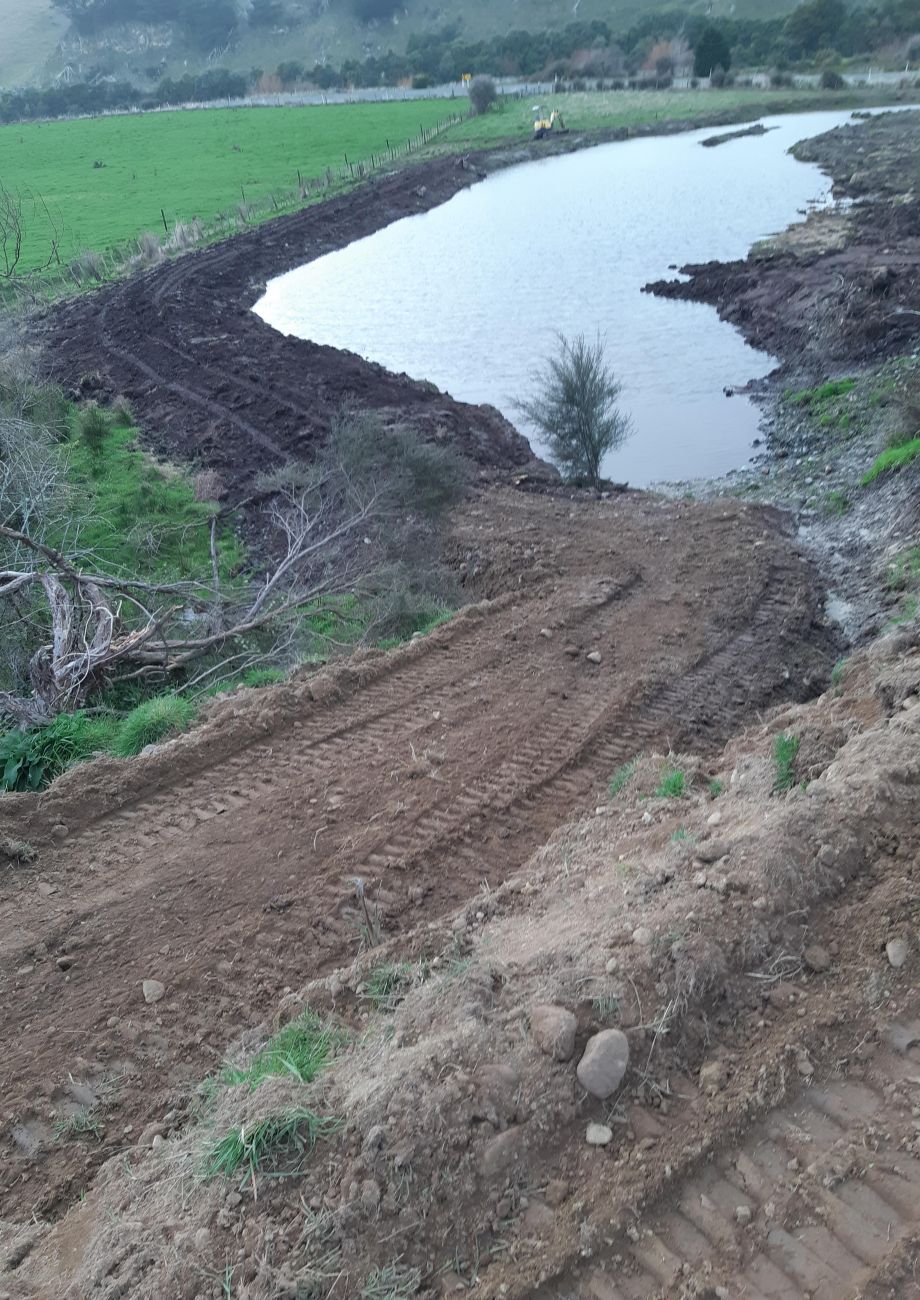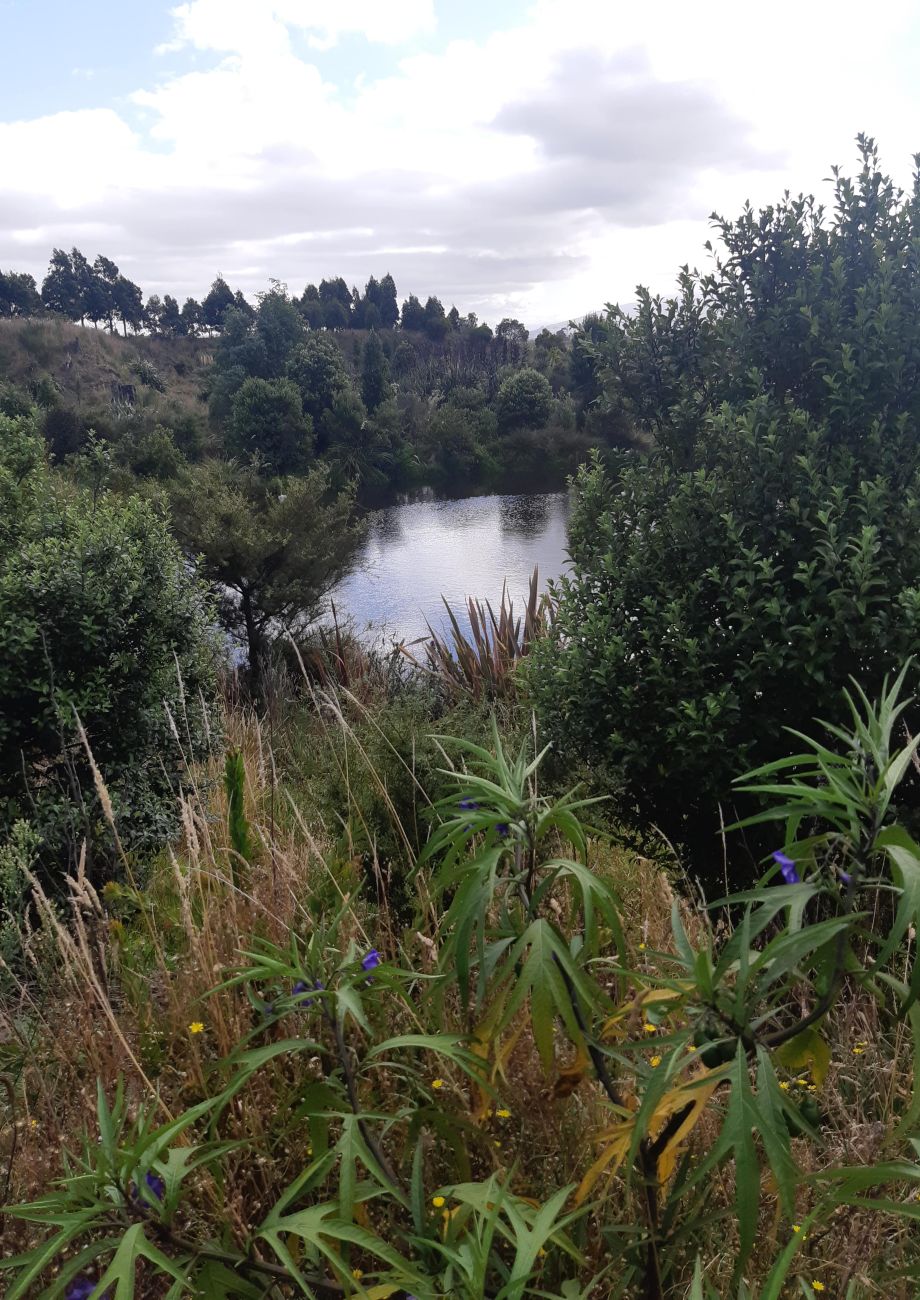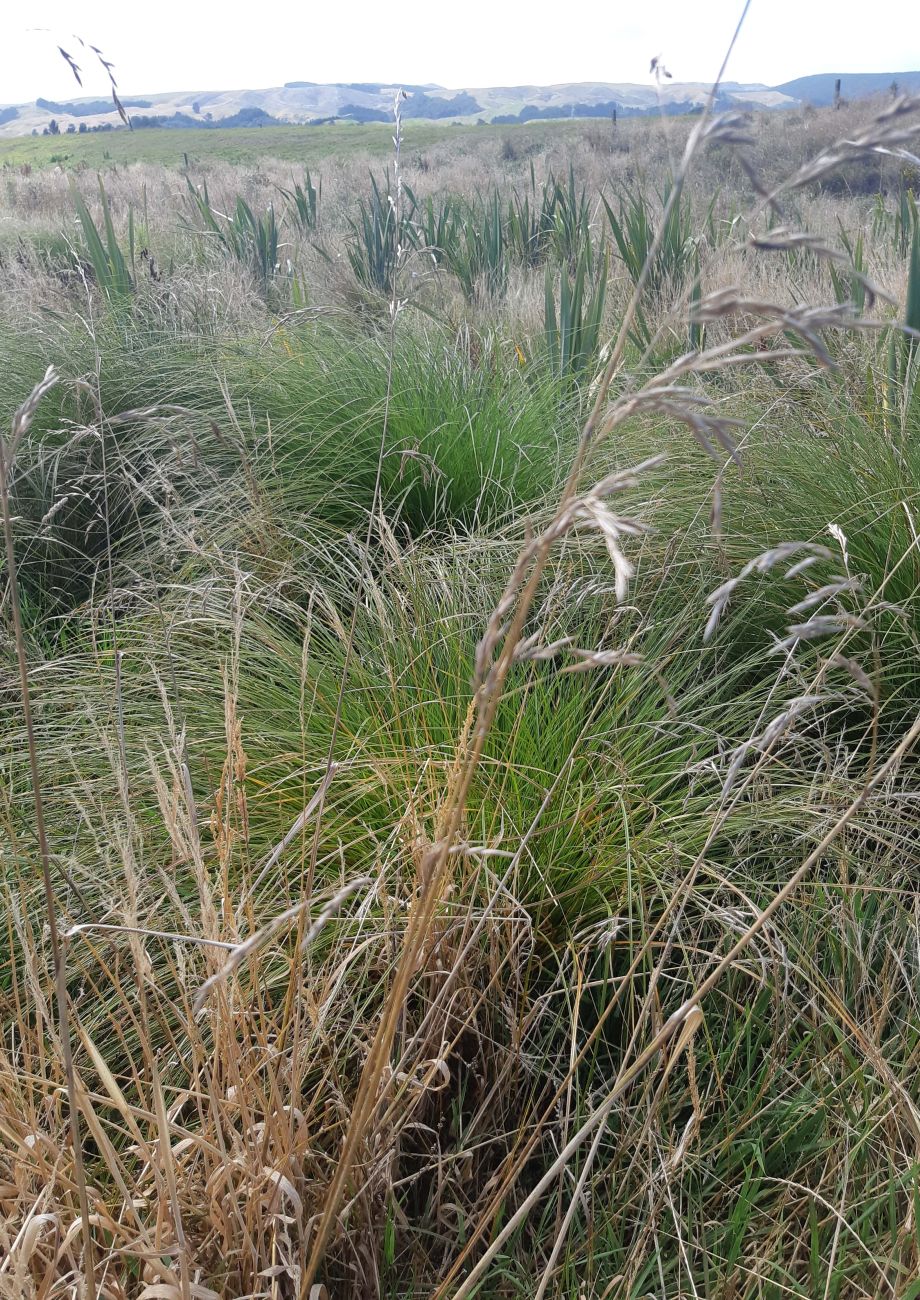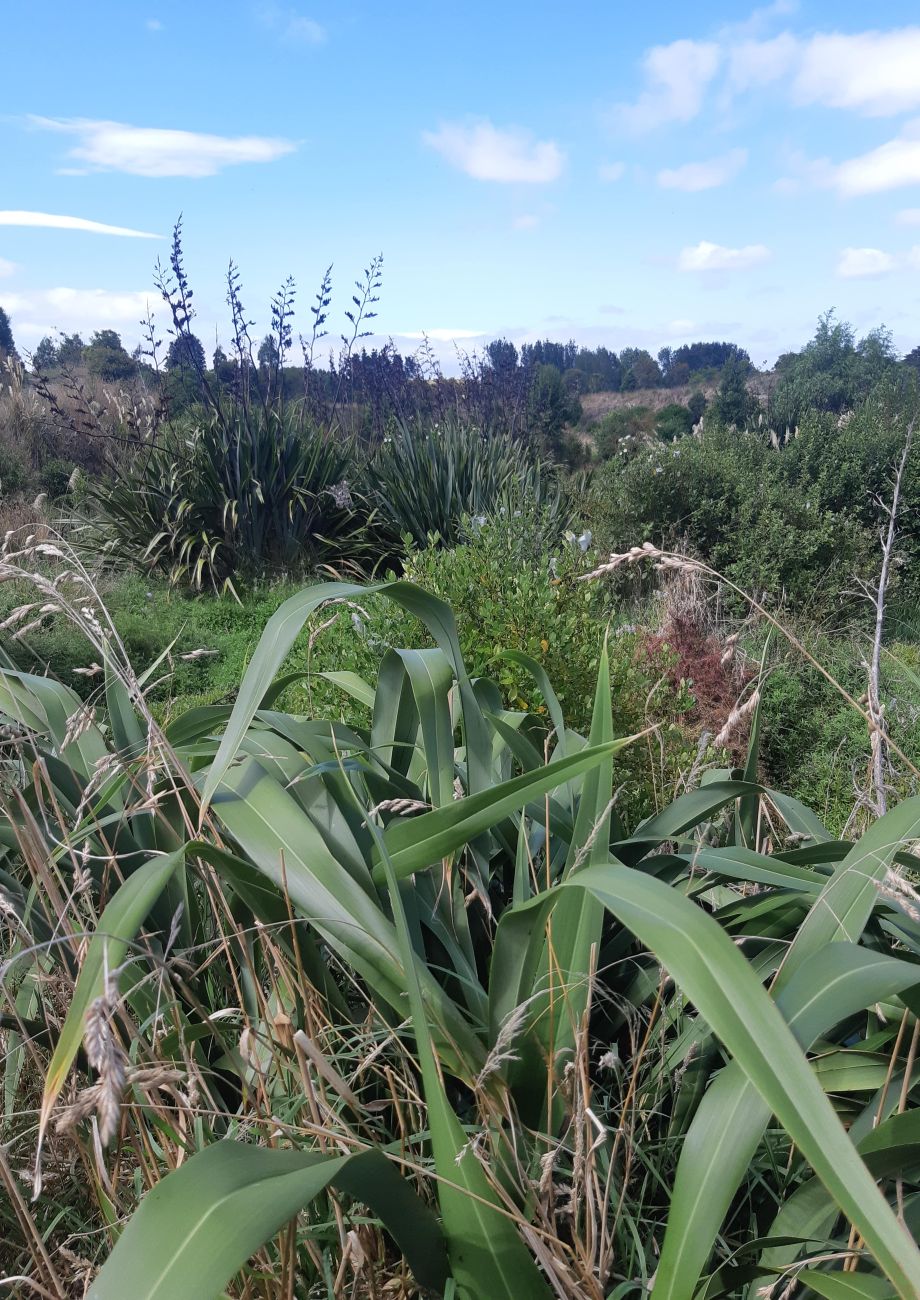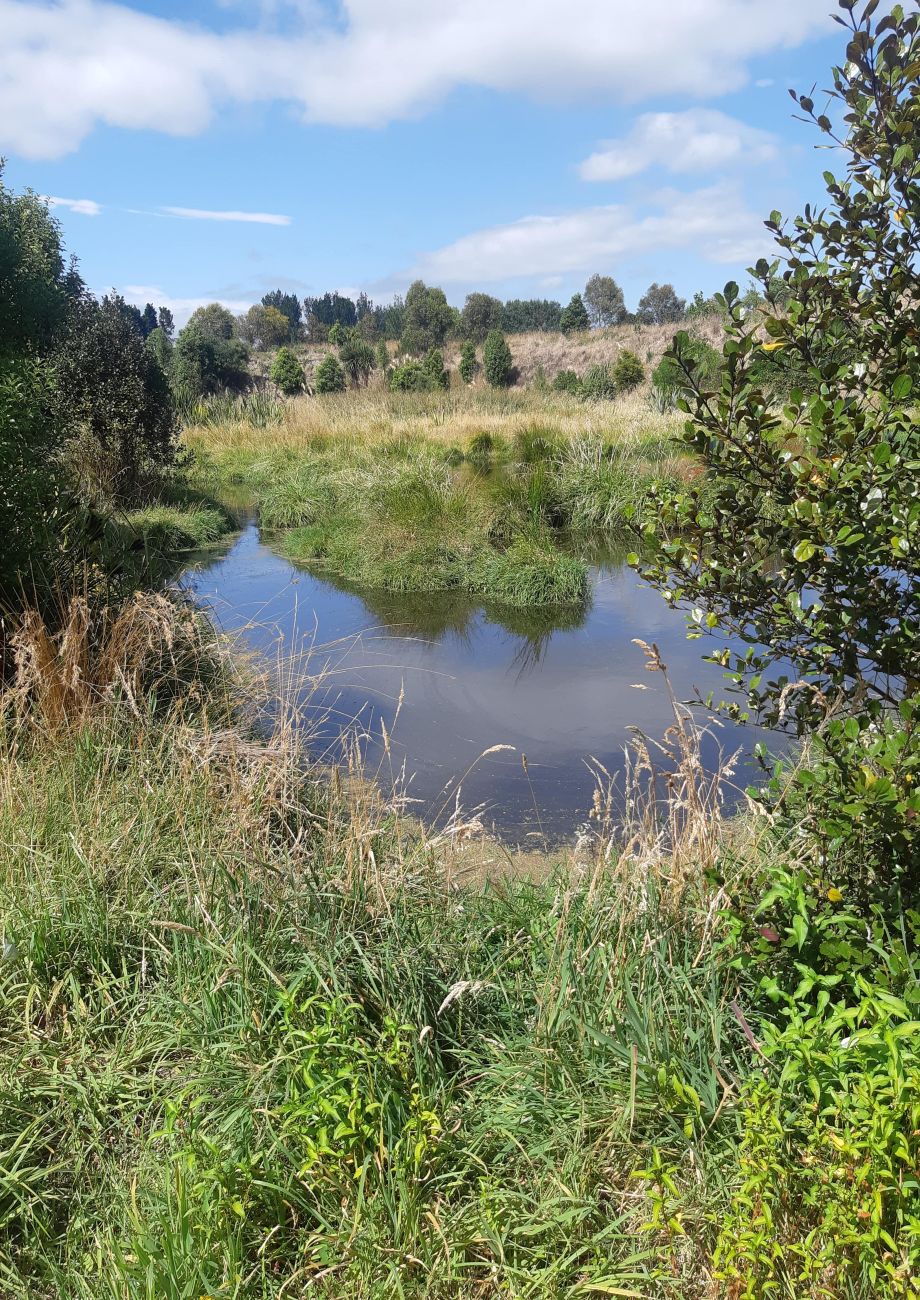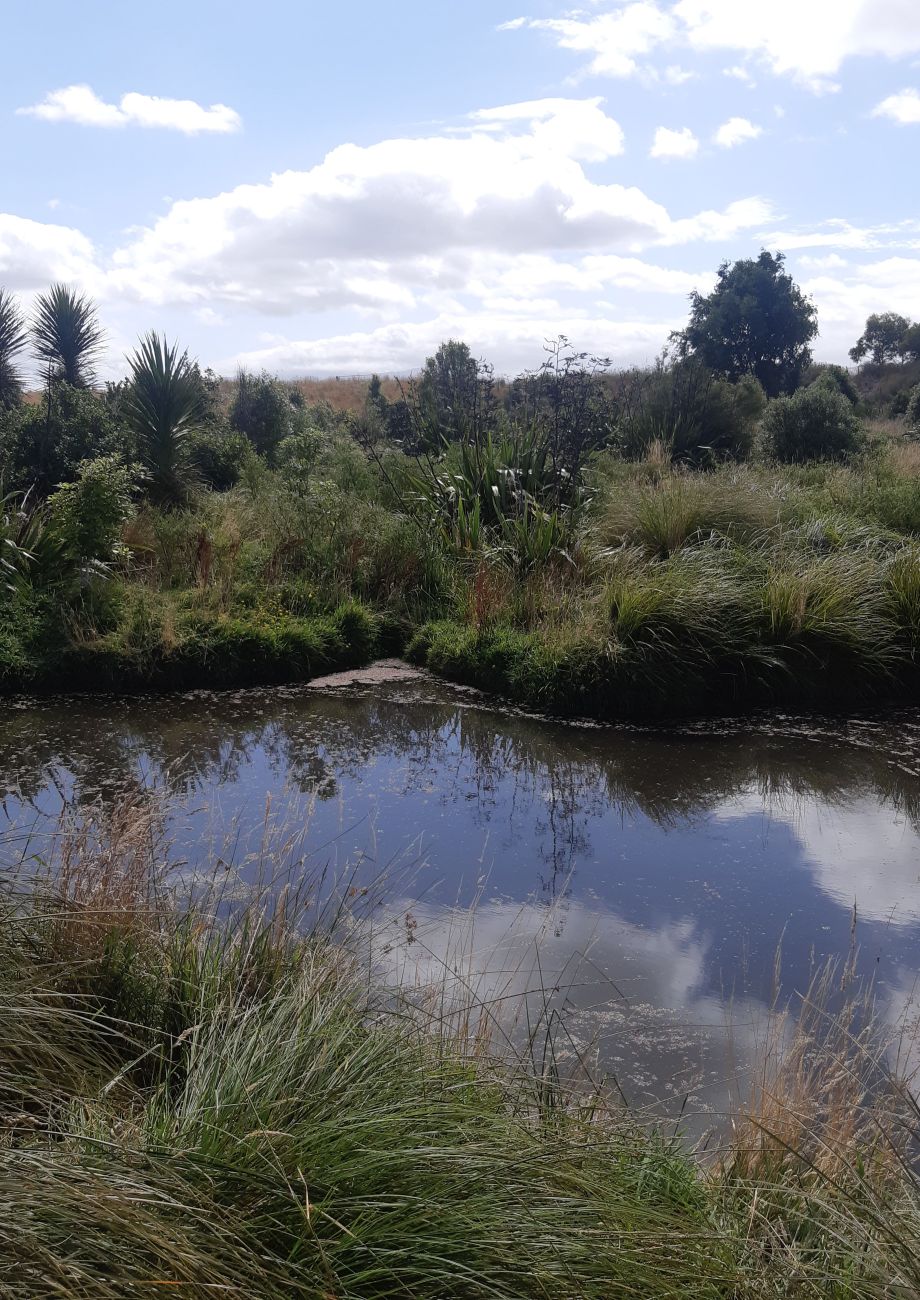Conservation; Project Description
Over the past 20 years we have been helping landowners to give low production, low lying, and boggy sites a new purpose.
Many farms and lifestyle blocks have springheads, small streams, or areas of poor-draining, low-lying land. Some may also be fed by tile drains bringing surface water from pasture or cropping sites.
We have been planting these shallow depressions and stream banks for a long time now. Where the flowrate is low and not affected too much by quick run-off, we often modify the banks and create an earth-berm with a fish-friendly overflow, to form a pond, or succession of ponds. These are planted with sedges and other plants with close, fibrous root systems. These ponds hold water throughout the summer months. Fish, frogs, eels, and the birds above them on the food chain find these areas irresistible and are found in much greater number than if left unmodified. Insect life above and below the water increases dramatically, attracting swallows, kingfishers, and predatory insects.
Dragonflies spend most of their larval life in damp mud and ponds, emerging as fast, flying predators of insect life. Damselflies are found in good numbers through the summer when the ponds have good marginal plantings. They feed on small insects as adults, catching them in flight, and in their larval stage they are also predators, feeding on smaller water-insects.
The downstream riparian corridors we plant have a much wider variety of native plants than are generally used by Regional Councils. Many currently use plants which produce wind-blown seeds or seed not generally useful to native birds. Toetoe, Flax, Manuka, Olearia and Carex species are great havens for terrestrial insects. The larvae from these insects in turn also provide most of the food for long and short-fin eels.
The planted sites need to include berry-producing plants as well. Some commonly used are Coprosma species, Cabbage Tree, and Kahikatea, as these are very readily available. All these above-named are not to be underestimated, nor should they be underutilised, as they are primary tools in stabilising the stream banks, even in flood and fast water.
We promote the inclusion of Matai, Tawa, Totara, Titoki, Black Maire, Swamp Maire, Hinau Rimu, Pigeonwood and Pokaka as they are forest canopy trees, and all provide fruit on a long-term basis. These plants shade out the weeds and form a deep, strong root-mass over time which locks the soil up against erosion. When they reach 4 – 6 metres you’ll find some of the undergrowth species self-perpetuating throughout the semi-shaded areas.
We look forward to assisting you in your next project along the lines of the above mentioned. Please contact us here
